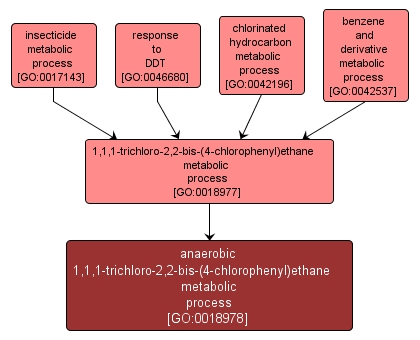GO TERM SUMMARY
|
| Name: |
anaerobic 1,1,1-trichloro-2,2-bis-(4-chlorophenyl)ethane metabolic process |
| Acc: |
GO:0018978 |
| Aspect: |
Biological Process |
| Desc: |
The chemical reactions and pathways involving 1,1,1-trichloro-2,2-bis-(4-chlorophenyl)ethane (DDT), a chlorinated, broad spectrum, contact insecticide, in the absence of oxygen. |
Synonyms:
- anaerobic 1,1,1-trichloro-2,2-bis-(4-chlorophenyl)ethane metabolism
- anaerobic DDT metabolism
- anaerobic DDT metabolic process
|
|

|
INTERACTIVE GO GRAPH
|














